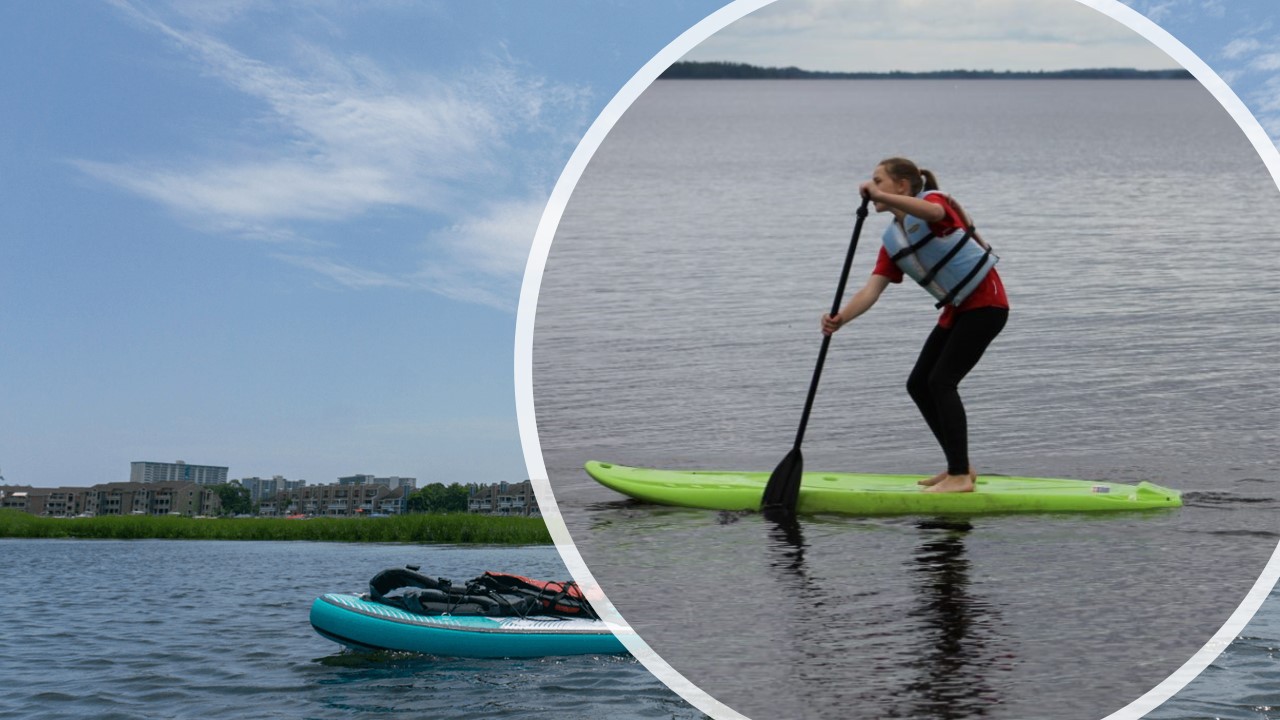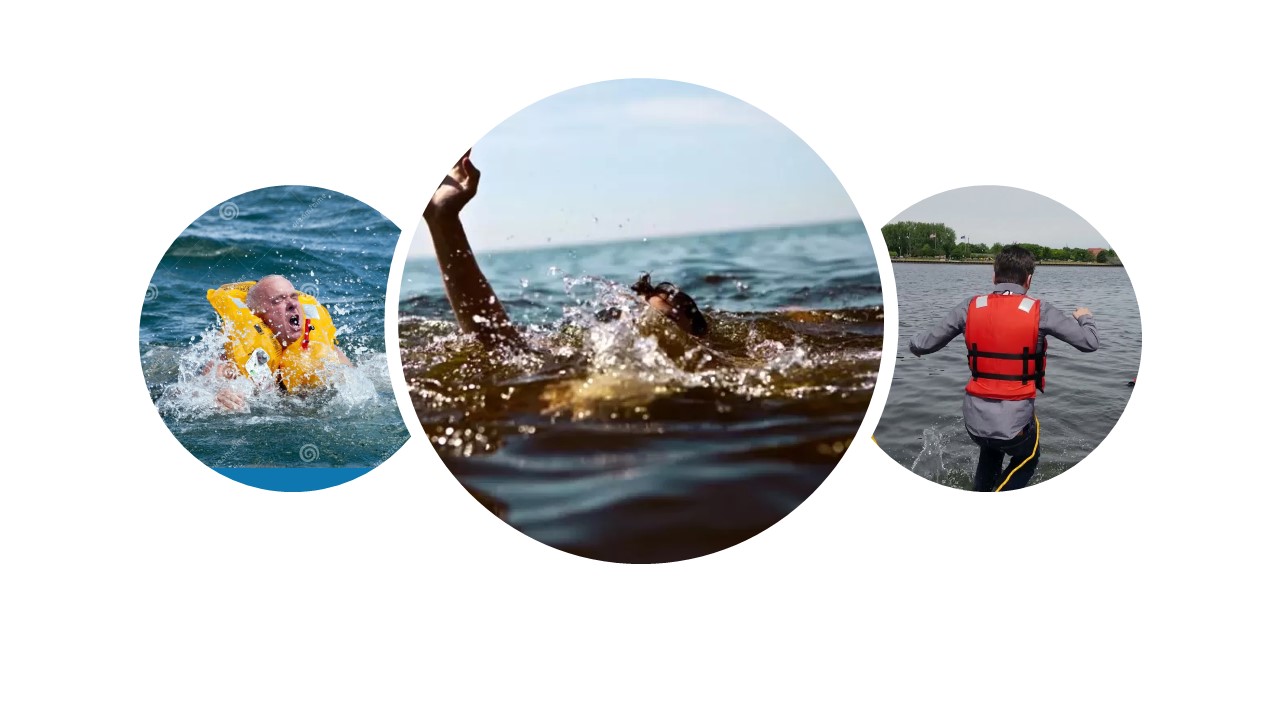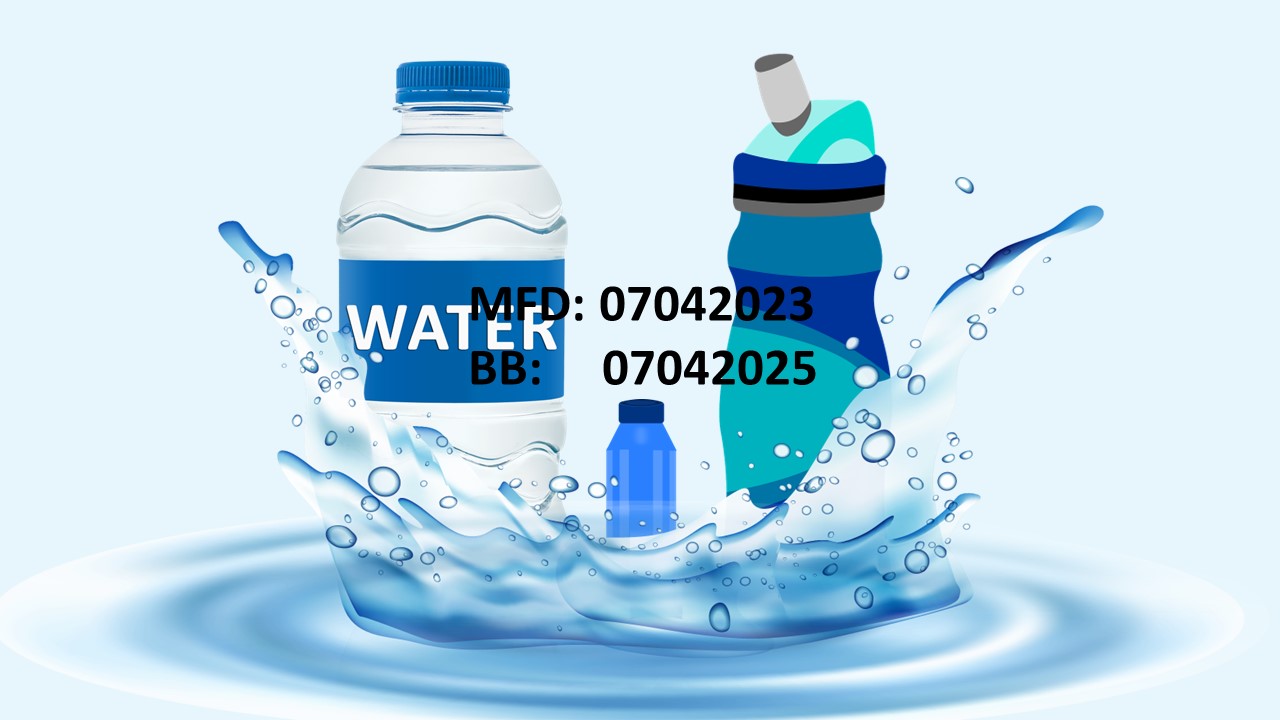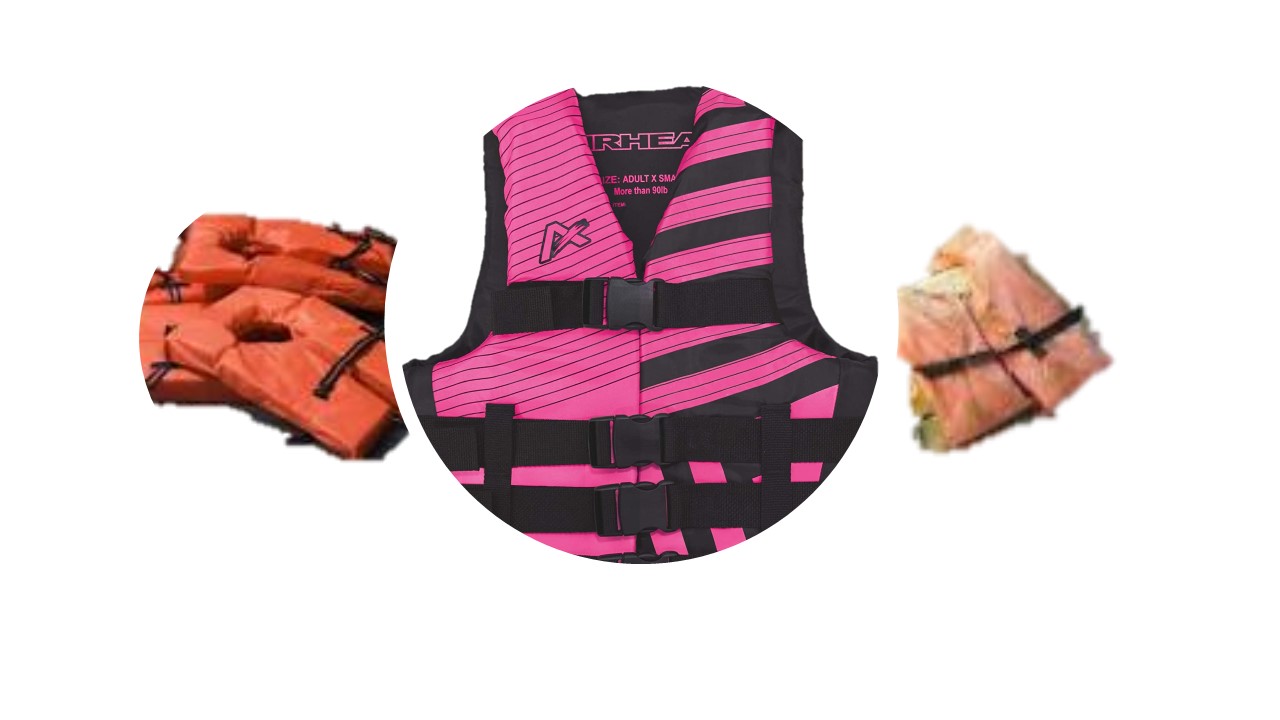Do Life Jackets Expire? – Unveiling The Truth Behind Expiration Dates
Looking to stay safe during your water adventures? One crucial question that often arises is, “Do life jackets expire?” When it comes to ensuring your safety on the water, understanding the lifespan of life jackets is paramount.
Life jackets do not have an official expiration date, but they can become less effective over time due to wear and tear, exposure to the elements, and other factors. The foam in foam life jackets can break down and lose its buoyancy, and the CO2 cartridges in inflatable life jackets can expire.
In this article, we’ll delve into the world of life jacket expiration dates and explore why they matter for your well-being. So, buckle up and let’s dive into the important realm of life jacket safety while also answering the question “Do life jackets expire.”
Do Life Jackets Expire
Life jackets do not have a universal expiration date, but they can lose their effectiveness and become less safe over time. The lifespan of a life jacket can vary depending on factors such as the materials used, frequency of use, exposure to sunlight and chemicals, and overall wear and tear.
Even if a life jacket doesn’t have a designated expiration date, it is essential to regularly inspect it for signs of wear and deterioration.
Look for faded colors, frayed straps, damaged buckles or zippers, and any other visible defects. If you notice any of these issues or have concerns about the life jacket’s condition, it is advisable to replace it.
Additionally, safety standards and regulations evolve over time, so even if a life jacket is technically still usable, it might not meet the latest requirements for buoyancy and performance.
Staying up to date with current safety standards and considering replacing an older life jacket with a newer model that meets the latest requirements can provide an extra level of safety.
How To Tell If A Life Jacket Is Expired (Do Life Jackets Expire)
Determining if a life jacket is expired requires careful inspection and consideration of several factors. Here are some key indicators to help you determine if a life jacket is expired:
1. Expiration Date
Usually, manufacturers of life jackets do not put an expiry date but a life jacket used frequently may require being changed between 3 and 10 years of use. If you have used your life jacket for 3 to 10 years, you want to check it thoroughly and change it if you suspect it is not working at its best.
2. Manufacturer’s Guidelines
Review the manufacturer’s guidelines and recommendations regarding the lifespan of the life jacket. They may provide specific information on when the life jacket should be replaced based on usage, materials, and other factors.
Adhering to these guidelines ensures that you are using the life jacket within its intended lifespan.
3. Visual Inspection
Conduct a thorough visual inspection of the life jacket. Look for any signs of wear and tear, such as faded colors, frayed straps, loose stitches, or damaged buckles. These are indications that the life jacket may be past its prime and potentially compromised in terms of functionality.
4. Loss of Buoyancy
Test the buoyancy of the life jacket. Place it in water and observe if it floats properly, keeping your head above the water surface. If the life jacket does not provide sufficient buoyancy or fails to keep you afloat, it may have lost its effectiveness and should be replaced.
5. Safety Features
Check the functionality of any safety features or components on the life jacket. This includes reflective strips, whistles, lights, or other rescue aids. If these features are damaged, non-functional, or no longer meet safety standards, it is a sign that the life jacket may be expired.
6. Age and Usage
Consider the age and frequency of use of the life jacket. Even if there is no explicit expiration date, life jackets can degrade over time due to exposure to elements, UV radiation, and regular wear and tear.
If the life jacket is significantly aged or has been subjected to extensive use, it is advisable to replace it to ensure optimal safety.
7. Odor or Mold
A strong, persistent odor or the presence of mold on a life jacket is indicative of moisture buildup. Moisture can accelerate the degradation of materials and compromise the integrity of the life jacket.
8. Damaged Buckles or Zippers
Check the condition of the buckles, zippers, or other fastening mechanisms. If they are broken, damaged, or no longer secure properly, they may hinder the life jacket’s ability to stay securely fastened.
Remember, the primary purpose of a life jacket is to provide reliable flotation and support in emergency situations. If you have any doubts about the condition or expiration of a life jacket, it is always safer to err on the side of caution and replace it with a new one.
Prioritizing your safety and ensuring that your life jacket is in good working condition is crucial for enjoying water activities with peace of mind.
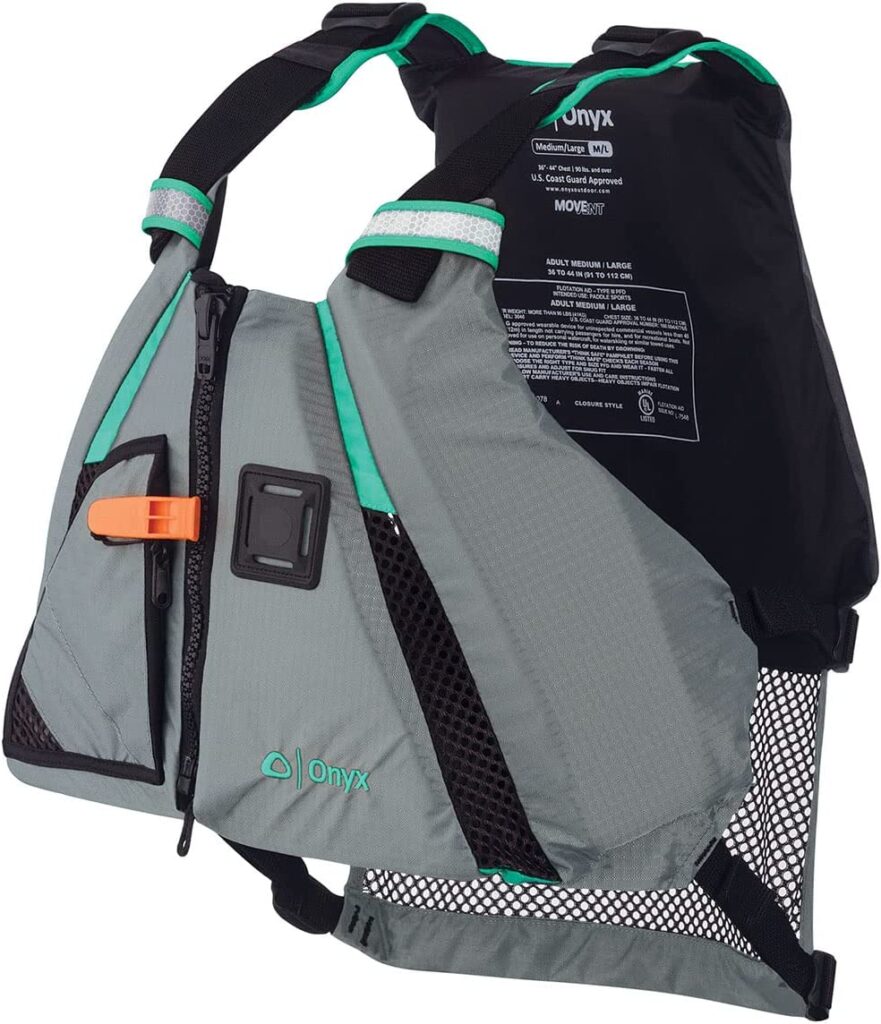
Factors Affecting The Lifespan Of A Life Jacket (Do Life Jackets Expire)
The lifespan of a life jacket can be influenced by various factors that impact its overall durability and effectiveness. Understanding these factors is crucial for maintaining a reliable and functional life-saving device. Let’s explore the key elements that can affect the lifespan of a life jacket:
1. Age
Just like any other product, life jackets age over time. Even if they are not used frequently, the materials can degrade and lose their original properties. Exposure to sunlight, temperature fluctuations, and storage conditions can all contribute to the aging process.
While there is no fixed expiration date for life jackets, it is recommended to replace them after a certain period, typically around 3 to 10 years, depending on usage and manufacturer guidelines.
2. Wear and Tear
Regular use and exposure to water, UV rays, and rough surfaces can cause wear and tear on a life jacket. The stress placed on the fabric, stitching, and hardware can compromise its integrity over time.
Straps may become frayed, buckles can weaken, and seams may start to loosen. It is essential to inspect your life jacket for signs of wear and tear regularly and address any issues promptly.
3. Damage
Accidents happen, and life jackets are not immune to damage. Impact with sharp objects, excessive force, or improper handling can cause structural damage to a life jacket.
Any visible cracks, punctures, or tears should be taken seriously, as they can significantly affect the buoyancy and performance of the life jacket. Damaged life jackets should be replaced immediately, as they may not provide reliable protection in an emergency.
RELATED: What Is A Characteristic Of A Type 3 Life Jacket
General Lifespan Of Life Jackets (Do Life Jackets Expire)
The general lifespan of a life jacket can range from 5 to 10 years. However, the lifespan of a life jacket can vary depending on several factors, including the quality of materials, frequency of use, and proper maintenance.
While there is no one-size-fits-all answer to how long a life jacket will last, understanding these factors can help us make informed decisions about their replacement.
High-quality life jackets constructed with durable materials tend to have a longer lifespan. They are designed to withstand the rigors of regular use and exposure to various environmental conditions.
On the other hand, life jackets made with lower-quality materials may deteriorate more quickly and have a shorter lifespan.
The frequency of use also affects a life jacket’s lifespan. If you frequently engage in water activities, your life jacket will experience more wear and tear.
Each use puts stress on the materials, especially during activities like boating, water sports, or fishing where the life jacket may come into contact with rough surfaces or encounter excessive strain.
Regular use may accelerate the deterioration of the life jacket’s components and reduce its effectiveness over time.
Proper maintenance plays a crucial role in extending the lifespan of a life jacket. Following the manufacturer’s guidelines for care and maintenance is essential.
This may include rinsing the life jacket with fresh water after each use to remove salt, sand, or chemicals, as well as allowing it to dry thoroughly before storage. Storing the life jacket in a cool and dry place, away from direct sunlight or extreme temperatures, can also help preserve its quality.
Regular inspections are key to identifying signs of wear and tear.
RELATED: Do You Need A Life Jacket On A Paddle Board – Unveiling The Key To Safe And Enjoyable Adventures
Tips To Extend The Lifespan Of Your Life Jacket
Proper care and maintenance play a crucial role in extending the lifespan of your life jacket. By following these tips, you can help ensure that your life jacket remains in good condition and continues to provide reliable safety:
1. Rinse with Fresh Water
Rinse your life jacket with fresh water after each use, especially if it has been exposed to saltwater or chemicals. Use a hose or a bucket of water to remove any debris or contaminants.
Gently scrub the surface if necessary, focusing on areas with visible dirt or stains. This helps prevent corrosion and the buildup of salt or other substances that can degrade the materials over time.
2. Thorough Drying
Allow your life jacket to dry thoroughly before storing it. Hang it in a well-ventilated area or lay it flat on a clean surface. Ensure that both the exterior and interior of the life jacket are completely dry to prevent the growth of mold or mildew.
Avoid using direct heat sources, such as hair dryers or heaters, as excessive heat can damage the materials.
3. Proper Storage
After each use, store your life jacket in a cool, dry place. Excessive heat and humidity can accelerate the degradation of materials.
Avoid storing it in direct sunlight or near sources of heat, such as heaters or radiators. Hanging the life jacket on a sturdy hanger or laying it flat in a well-ventilated area will help maintain its shape and prevent unnecessary wear.
4. Inspect Regularly
Conduct regular inspections of your life jacket to check for any signs of wear and tear. Look for frayed straps, loose stitches, or damaged buckles.
Pay attention to the fabric, zippers, and any reflective strips or safety features. If you notice any issues, address them promptly. Small repairs can prevent further damage and extend the life of your life jacket.
5. Avoid Harsh Chemicals
Keep your life jacket away from harsh chemicals, gasoline, oil, or solvents. These substances can deteriorate the materials and compromise the integrity of the life jacket. If your life jacket comes into contact with any chemicals, rinse it thoroughly with fresh water as soon as possible.
6. Follow Manufacturer’s Guidelines
Refer to the manufacturer’s guidelines for specific care instructions tailored to your life jacket. They may provide additional recommendations based on the materials used. Following these guidelines ensures that you are taking the best possible care of your life jacket.
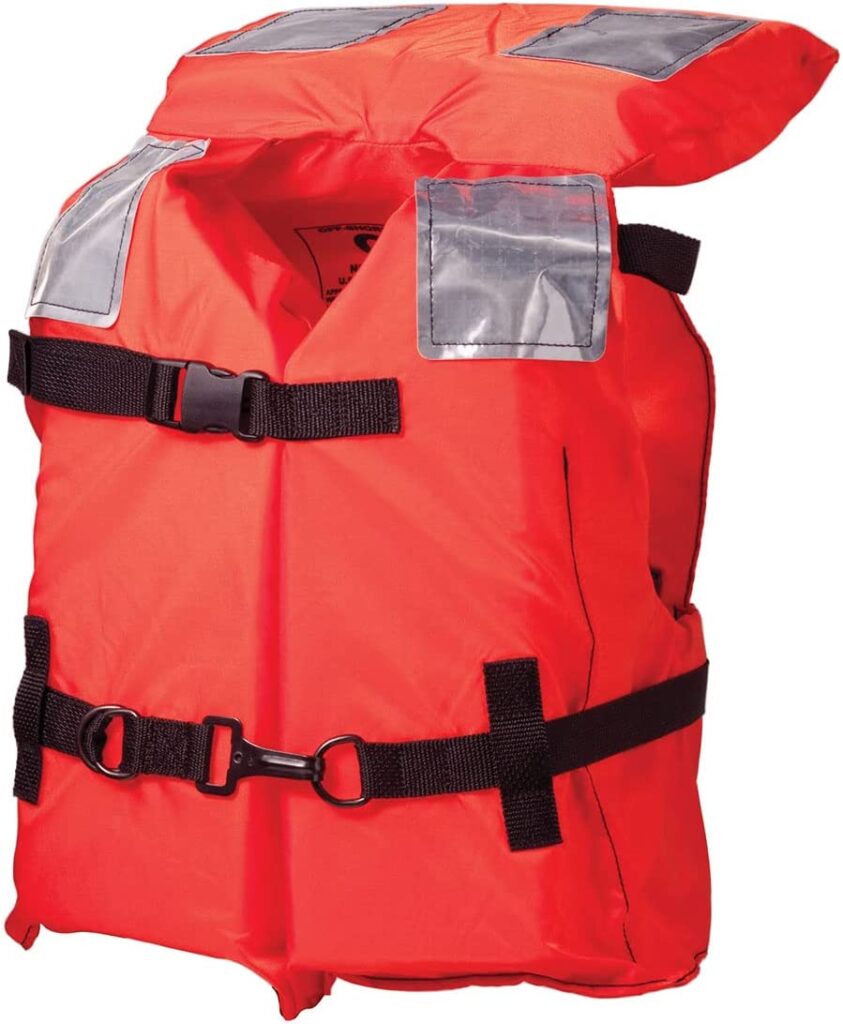
Life Jacket Safety Standards
When it comes to life jackets, stringent safety standards and certifications are in place to ensure their reliability and effectiveness. One prominent regulatory body that sets these standards is the United States Coast Guard (USCG), which establishes guidelines for life jackets used in the United States.
Similar regulatory bodies exist in other countries, and their standards may align with or be equivalent to those set by the USCG.
Life jackets undergo rigorous testing to meet these safety standards. They are subjected to various assessments to ensure their buoyancy, durability, visibility, and other key safety features.
These tests evaluate factors such as the amount of buoyancy provided, the ability to keep the wearer afloat, and the performance in different water conditions.
Life Jacket Regulations
Life jacket regulations vary by country and region, but they generally aim to establish safety standards for the design, manufacture, labeling, and use of life jackets. Here are some key aspects of life jacket regulations:
1. Regulatory Bodies
Different countries have designated regulatory bodies responsible for setting and enforcing life jacket regulations. For example, in the United States, the United States Coast Guard (USCG) sets the standards for life jackets, while in Europe, the International Organization for Standardization (ISO) and the European Committee for Standardization (CEN) establish the requirements.
2. Types and Classes
Life jackets are categorized into different types or classes based on their intended use and buoyancy characteristics. Each type or class has specific requirements and performance standards.
For instance, in the United States, there are Type I, Type II, Type III, Type IV, and Type V life jackets, each designed for different water activities and conditions.
3. Buoyancy Requirements
Life jacket regulations often specify minimum buoyancy requirements for each type or class of life jacket. These requirements ensure that the life jacket provides sufficient buoyancy to keep you afloat and positioned correctly in the water.
4. Design and Construction Standards
Regulations may outline design and construction standards for life jackets, including requirements for materials, stitching, closures (buckles, zippers, or ties), and reflective materials. These standards aim to ensure durability, visibility, and proper functionality of life jackets.
5. Labeling and Certification
Life jacket regulations typically require labeling on the product that provides important information such as type or class, buoyancy rating, size range, manufacturer details, and any relevant certifications or approvals.
Certification processes, such as the USCG approval or CE marking in Europe, indicate that the life jacket meets the specified standards.
6. Usage Requirements
Regulations may also include guidelines on when and where life jackets must be worn, such as on specific types of vessels, in certain water conditions, or for particular age groups. These requirements promote safety and help prevent accidents and drownings.
Importance Of Life Jacket Replacement (Do Life Jackets Expire)
Replacing expired or damaged life jackets is of utmost importance when it comes to ensuring safety during water activities. Using an expired or compromised life jacket can significantly increase the risks associated with water emergencies. Here’s why replacing such life jackets is crucial:
1. Adequate Buoyancy and Support: A life jacket’s primary function is to provide buoyancy and support in the water. Over time, materials can deteriorate, compromising their ability to keep you afloat.
An expired life jacket may not offer the necessary buoyancy to keep your head above water, increasing the risk of submersion and potential drowning.
2. Reliable Safety Features: Life jackets are designed with specific safety features, such as reflective strips, whistles, or lights, to enhance visibility and facilitate rescue efforts.
These features may degrade or become ineffective over time. By replacing your life jacket, you ensure that all safety components are in proper working order, increasing your chances of being located and rescued in an emergency.
3. Compliance with Current Standards: Safety standards and regulations evolve over time, incorporating advancements in technology and research.
By replacing an older life jacket, you can ensure compliance with the latest standards, which are designed to maximize safety and performance. Staying up to date with current standards provides peace of mind and ensures that you are utilizing the most effective safety equipment available.
4. Protection for Loved Ones: The importance of life jacket replacement extends beyond personal safety. If you are responsible for the well-being of others, such as family members or friends, providing them with properly functioning life jackets is crucial.
By investing in new life jackets, you demonstrate your commitment to their safety and minimize the risks they may face during water activities.
5. Peace of Mind: Engaging in water activities can be enjoyable and rewarding, but it is essential to have peace of mind knowing that you are equipped with reliable safety gear.
By replacing expired or damaged life jackets, you can participate in water activities with confidence, knowing that you have taken the necessary precautions to protect yourself and those around you.

What To Do With Old Life Jackets
When you have old life jackets that are expired or no longer usable, it’s important to handle them responsibly. Here are a few options for what you can do with old life jackets:
1. Dispose of Them Properly
If the life jackets are no longer usable or beyond their expiration date, it is best to dispose of them properly. Check with your local waste management or recycling facility to determine the best way to dispose of them.
They may have specific guidelines for the disposal of old life jackets, as they often contain different materials like foam, fabric, and straps. Follow their instructions to ensure the life jackets are disposed of safely and in an environmentally friendly manner.
2. Donate Them to Charitable Organizations
If the life jackets are still in usable condition but you no longer need them, consider donating them to charitable organizations or community groups that may benefit from them.
Local boating clubs, water sports organizations, or youth programs may be interested in accepting used life jackets. Make sure to contact them beforehand to inquire if they accept donations and if they have any specific requirements or guidelines.
3. Sell or Give Them Away
If the life jackets are still in good condition, you might consider selling or giving them away to individuals who may find them useful. Online marketplaces or classified ads platforms can be a suitable option for selling or giving away old life jackets.
However, it’s important to be transparent about the condition and expiration date (if applicable) of the life jackets to ensure the safety of potential buyers or recipients.
4. Recycle or Repurpose
In some cases, parts of the old life jackets can be recycled or repurposed. Check if there are recycling facilities in your area that accept foam or fabric materials from life jackets.
Alternatively, you can explore creative ways to repurpose the materials, such as using the fabric for craft projects or repurposing the foam for padding or insulation in other applications. Be mindful of any safety concerns when repurposing or recycling life jacket materials.
Remember, the goal is to ensure the responsible and safe handling of old life jackets.
Whether you choose to dispose of them, donate them, sell/give them away, or explore recycling options, make sure to consider the condition, expiration date (if applicable), and potential safety implications to protect others and the environment.
Purchasing New Life Jackets: What You Need To Know
When it comes to selecting and purchasing new life jackets, there are several important factors to consider to ensure you choose the right ones for your needs. Here are some key considerations:
1. Intended Use: Determine the specific activities and water conditions for which you’ll need the life jackets. Different types of life jackets are designed for specific uses, such as boating, kayaking, fishing, or water sports.
Select a life jacket that is appropriate for your intended activities to ensure optimal safety and performance.
2. Proper Fit: A properly fitting life jacket is essential for its effectiveness. Check the size and weight range specified by the manufacturer and try the life jacket on before purchasing. It should fit snugly but comfortably, with adjustable straps to ensure a secure and personalized fit.
Consider factors such as body shape, chest size, and any additional layers of clothing you may wear while using the life jacket.
3. Buoyancy Rating: Look for the buoyancy rating specified by the manufacturer. This rating indicates the amount of flotation the life jacket provides. It is typically expressed in pounds or Newtons.
Select a life jacket with a buoyancy rating suitable for your weight and the water conditions in which you’ll be using it. Ensure that the life jacket provides enough buoyancy to keep your head above water and support your weight.
4. Safety Standards Compliance: Check if the life jacket meets the safety standards and certifications set by recognized regulatory bodies such as the United States Coast Guard (USCG) or equivalent organizations in your country.
Look for labels or markings indicating compliance with these standards, as they ensure that the life jacket has undergone rigorous testing for safety and performance.
5. Reputable Brands and Retailers: Consider purchasing life jackets from reputable brands and trusted retailers. These brands often have a track record of manufacturing reliable and high-quality life jackets. Look for well-known names in the industry that have a history of producing safety equipment.
How Long Do Life Jackets Last In Water
Life jackets can last for more than 3 days depending on the condition of the jacket. They are devised to provide buoyancy and support in water, but the duration for which they can keep you afloat can vary depending on several factors. Here are some key considerations:
1. Buoyancy Rating: Life jackets are assigned buoyancy ratings based on their ability to support a person’s weight in water. The buoyancy rating is typically measured in pounds or kilograms and indicates the amount of flotation the life jacket provides.
The ratings are 50, 100, 150 and 275. Higher buoyancy ratings generally mean the life jacket can keep you afloat for a longer duration.
2. Type of Life Jacket: Different types of life jackets serve different purposes and offer varying levels of buoyancy. Type I life jackets, also known as offshore life jackets, are designed to provide the highest level of buoyancy and can keep you afloat for an extended period.
Type II and Type III life jackets, commonly used for recreational activities, offer less buoyancy but can still provide adequate support in calm waters.
3. Water Conditions: The duration for which a life jacket can keep you afloat in water can be influenced by the specific water conditions. Calm, still water will generally require less effort to stay afloat compared to rough or choppy waters.
Wave height, current strength, and other environmental factors can impact the duration for which the life jacket can effectively keep you buoyant.
4. Individual Factors: The duration a life jacket can last in water also depends on individual factors such as body weight, swimming ability, and fatigue.
A person’s body weight affects the amount of buoyancy required to keep them afloat. Swimming ability and energy levels play a role in how long a person can actively stay afloat while wearing a life jacket.
It’s important to note that life jackets are designed to provide temporary support until rescue or assistance is available.
They are not intended for prolonged use in water. If you find yourself in a situation where you need to rely on a life jacket for an extended period, it is crucial to conserve energy, stay calm, and await rescue.
Do Life Jackets Have A Weight Limit (Do Life Jackets Expire)
Life jackets generally do not have weight limits. Instead, they are typically classified into different sizes or buoyancy ratings to ensure a proper fit for individuals of various weights and sizes.
It is important to choose a life jacket that fits well and is appropriate for your body size and weight. The correct fit is essential for the life jacket to function effectively in providing buoyancy and keeping you afloat in water.
When selecting a life jacket, consider the sizing guidelines provided by the manufacturer and try on different options to find the one that fits you snugly and securely. The life jacket should allow for comfortable movement and should not ride up excessively when in use.
The Bottom Line On Do Life Jackets Expire
It is essential to address the question, “Do life jackets expire?” The answer is that while life jackets do not have a specific expiration date, they can deteriorate over time and lose their effectiveness.
To ensure your safety and the safety of your loved ones, it is crucial to regularly inspect your life jackets for signs of wear and tear, follow the manufacturer’s guidelines, and replace them if necessary.
By understanding the factors that can affect the lifespan of life jackets and taking proactive steps to extend their durability, you can enjoy water activities with peace of mind.
Remember, investing in new, properly functioning life jackets is a small price to pay for the invaluable protection they provide. Don’t compromise on safety—keep your life jackets in optimal condition to stay afloat and protected whenever you need them.
